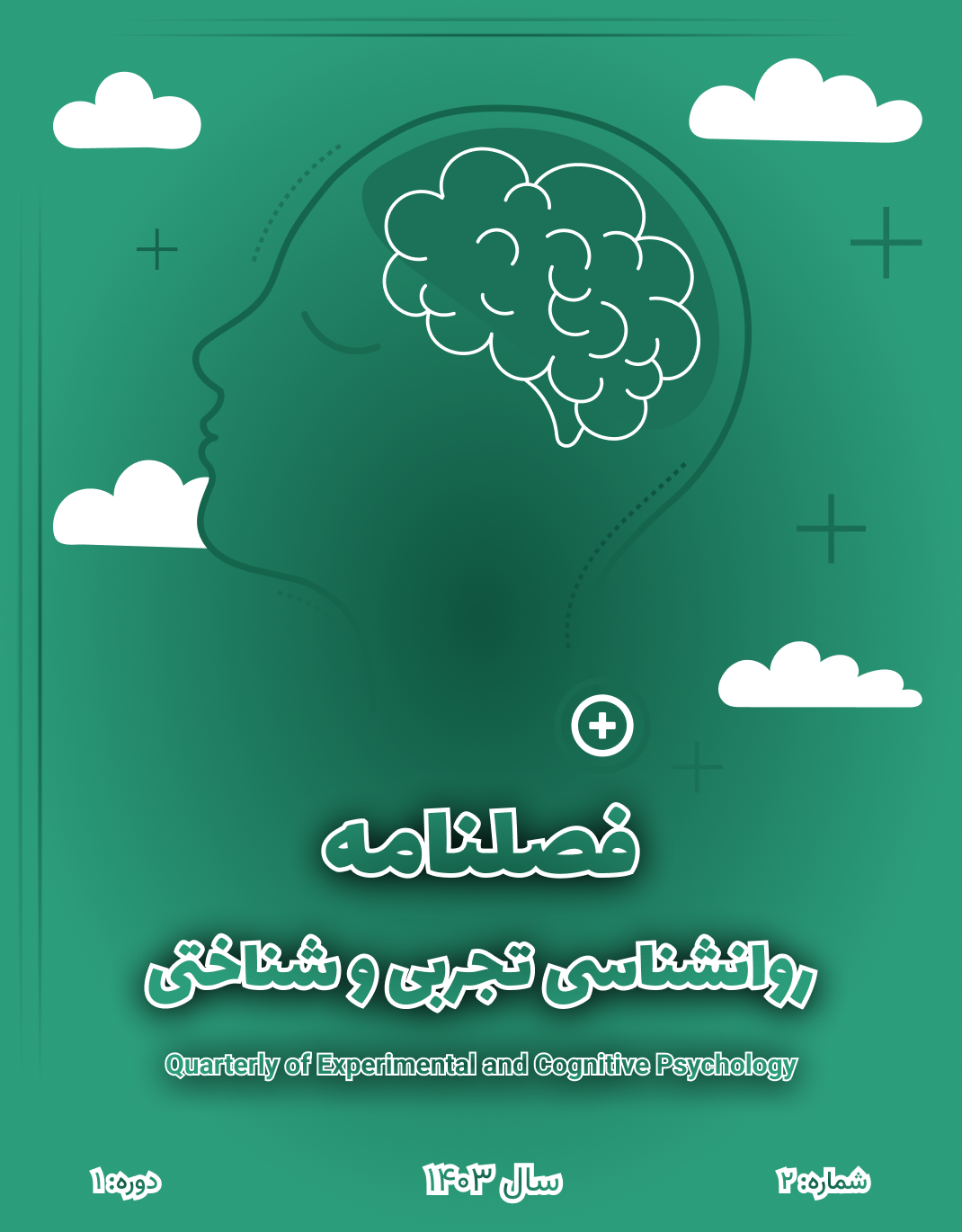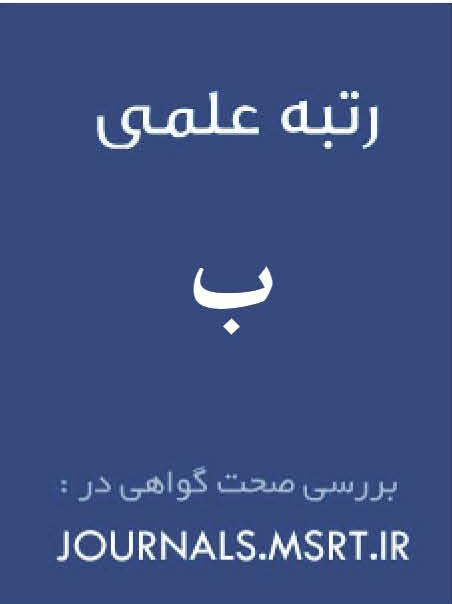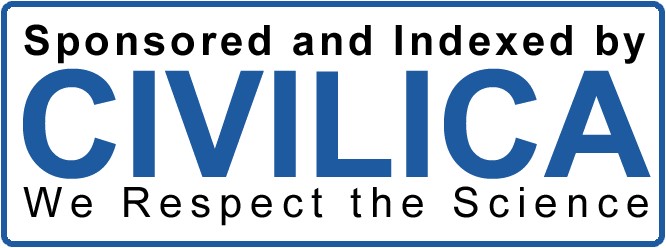بررسی اثربخشی پیشگیری از عود مبتنی بر نوروفیدبک و توانبخشی شناختی بر افسردگی در مصرفکنندگان مت آمفتامین
کلمات کلیدی:
نوروفیدبک, توانبخشی شناختی, مت¬امفتامین, افسردگیچکیده
چکیده
هدف: هدف این پژوهش بررسی اثربخشی پیشگیری از عود مبتنی بر نوروفیدبک و توانبخشی شناختی بر افسردگی در مصرفکنندگان مت آمفتامین بوده است.
مواد و روشها: پژوهش حاضر از نظر هدف بنیادین، از نظر شیوه گردآوری دادهها پیمایشی و از نظر روش تحلیل کمی بوده است و برای گردآوری دادهها از پرسشنامه پرسشنامه افسردگی بک، پرسشنامه سنجش ولع مصرف فرانکن[1] و همکاران (2002) و پرسشنامه درد مک گیل استفاده شد. جامعهی آماری پژوهش شامل زنان 20 الی 40 سال دارای سابقه اعتیاد به مت آمفتامین در شهر تهران که ترک کرده و در کلاسهای قدم شرکت داشتند را شامل شد. مداخلات در دو گروه نوروفیدبک و توانبخشی شناختی صورت گرفت. از نمونهها قبل از ورود به پژوهش رضایت کتبی و آگاهانه اخذ شده و همچنین پژوهش حاضر در کمیته اخلاق ثبت شده است. جلسات نوروفیدبک به مدت 5 هفته و دو جلسه 40 دقیقهای در هفته انجام شد و همچنین توانبخشی شناختی در 14 جلسه 30 دقیقهای طی دو روز در هفته اجرا شد. به منظور آزمون فرضیههای پژوهش و مقایسه گروهها از آزمون تحلیل کوواریانس تک متغیرها (ANCOVA) و تحلیل کواریانس چندمتغیره (MANCOVA) استفاده شد. تجزیه و تحلیل دادهها با استفاده از SPSS 28 انجام شد.
یافتهها: نتایج تحلیل نشان داد که اثربخشی مداخله نوروفیدبک و توان بخشی شناختی بر متغیر افسردگی و ولع مصرف لحظهای تایید شد (05/0>p). همچنبن نتایج نشان داد که سطح معنیداری بدست آمده برای متغیر افسردگی کمتر از سطح خطای آلفای 05/0 بود که نشان از اثربخشی مداخله نوروفیدبک و توان بخشی شناختی بر بهبود متغیر افسردگی داشت. اندازه اثر برابر با 110/0 بود و نشان داد مداخله توانست به میزان 00/11 درصد بر تغییرات افسردگی موثر باشد.
نتیجهگیری: مداخلات مبتنی بر نوروفیدبک و توانبخشی شناختی به طور معناداری در کاهش افسردگی و ولع مصرف در مصرفکنندگان متآمفتامین مؤثر بودند و میتوانند به عنوان روشهایی مکمل در برنامههای درمانی مورد استفاده قرار گیرند.
[1] Franken
دانلودها
مراجع
Aghaziarati, A., Fard, F. R., Rahimi, H., & Parsakia, K. (2023). Investigating the Effect of Electrical Stimulation (tDCS) of the Prefrontal Cortex of the Brain on the Improvement of Behavioral and Neurological Symptoms of Children with Specific Learning Disabilities. Health Nexus, 1(2), 44-50. https://doi.org/10.61838/kman.hn.1.2.6
Alamdarloo, G. H., Khorasani, S. M., Najafi, M., Jabbari, F. S., & Shojaee, S. (2019). The effect of cognitive-behavioral therapy on depression, anxiety, and stress levels in Iranian males with addiction. Sage Open, 9(1), 2158244018824466.
Amann, M., Haug, S., Wenger, A., Baumgartner, C., Ebert, D. D., Berger, T., Stark, L., Walter, M., & Schaub, M. P. (2018). The effects of social presence on adherence-focused guidance in problematic cannabis users: protocol for the CANreduce 2.0 randomized controlled trial. Jmir Research Protocols, 7(1), e9484.
Askovic, M., Watters, A. J., Coello, M., Aroche, J., Harris, A. W., & Kropotov, J. (2020). Evaluation of neurofeedback for posttraumatic stress disorder related to refugee experiences using self-report and cognitive ERP measures. Clinical EEG and Neuroscience, 51(2), 79-86.
Barati, A., Safarzadeh Sirzar, R., Pakroyan, N., & Salehi, F. (2023). The relationship between obsession and addiction relapse with the mediation of sensation seeking in methamphetamine dependent patients. Journal of Adolescent and Youth Psychological Studies (JAYPS), 4(9), 70-78. https://doi.org/10.61838/kman.jayps.4.9.8
Capon, H., Hall, W., Fry, C., & Carter, A. (2016). Realising the technological promise of smartphones in addiction research and treatment: an ethical review. International Journal of Drug Policy, 36, 47-57.
Chen, T.-C., & Lin, I.-M. (2020). The learning effects and curves during high beta down-training neurofeedback for patients with major depressive disorder. Journal of affective disorders, 266, 235-242.
Costumero, V., Rosell-Negre, P., Bustamante, J. C., Fuentes-Claramonte, P., Llopis, J. J., Ávila, C., & Barrós-Loscertales, A. (2018). Left frontoparietal network activity is modulated by drug stimuli in cocaine addiction. Brain Imaging and Behavior, 12(5), 1259-1270.
Darke, S., Kaye, S., Duflou, J., & Lappin, J. (2019). Completed suicide among methamphetamine users: a national study. Suicide and Life‐Threatening Behavior, 49(1), 328-337.
Darke, S., Kaye, S., McKetin, R., & Duflou, J. (2008). Major physical and psychological harms of methamphetamine use. Drug and Alcohol Review, 27(3), 253-262.
Egner, T., Zech, T., & Gruzelier, J. H. (2004). The effects of neurofeedback training on the spectral topography of the electroencephalogram. Clinical Neurophysiology, 115(11), 2452-2460.
Fadardi, J. S., & Cox, W. M. (2009). Reversing the sequence: reducing alcohol consumption by overcoming alcohol attentional bias. Drug and Alcohol Dependence, 101(3), 137-145.
Ferreri, F., Bourla, A., Mouchabac, S., & Karila, L. (2018). e-Addictology: an overview of new technologies for assessing and intervening in addictive behaviors. Frontiers in Psychiatry, 51.
Fitzpatrick, R. E., Rubenis, A. J., Lubman, D. I., & Verdejo-Garcia, A. (2020). Cognitive deficits in methamphetamine addiction: Independent contributions of dependence and intelligence. Drug and Alcohol Dependence, 209, 107891.
Ford II, J. H., Alagoz, E., Dinauer, S., Johnson, K. A., Pe-Romashko, K., & Gustafson, D. H. (2015). Successful organizational strategies to sustain use of A-CHESS: a mobile intervention for individuals with alcohol use disorders. Journal of medical Internet research, 17(8), e3965.
Franken, I. H., Hendriks, V. M., & van den Brink, W. (2002). Initial validation of two opiate craving questionnaires: the Obsessive Compulsive Drug Use Scale and the Desires for Drug Questionnaire. Addictive behaviors, 27(5), 675-685.
Free, C., Phillips, G., Galli, L., Watson, L., Felix, L., Edwards, P., Patel, V., & Haines, A. (2013). The effectiveness of mobile-health technology-based health behaviour change or disease management interventions for health care consumers: a systematic review. PLOS Medicine, 10(1), e1001362.
Gruzelier, J. H. (2014). Differential effects on mood of 12–15 (SMR) and 15–18 (beta1) Hz neurofeedback. International Journal of Psychophysiology, 93(1), 112-115.
Gruzelier, J. H., Foks, M., Steffert, T., Chen, M.-L., & Ros, T. (2014). Beneficial outcome from EEG-neurofeedback on creative music performance, attention and well-being in school children. Biological Psychology, 95, 86-95.
Hanslmayr, S., Sauseng, P., Doppelmayr, M., Schabus, M., & Klimesch, W. (2005). Increasing individual upper alpha power by neurofeedback improves cognitive performance in human subjects. Applied Psychophysiology and Biofeedback, 30(1), 1-10.
He, H., Zhou, S., Peng, C., Ran, W., Tong, S., Hong, L., Cai, F., Jin, W., Jiang, Y., & Li, M. (2022). Effects of resilience on impulsivity, cognition and depression during protracted withdrawal among Chinese male methamphetamine users. BMC psychiatry, 22(1), 1-10.
Huang, J., Zheng, Y., Gao, D., Hu, M., & Yuan, T. (2020). Effects of exercise on depression, anxiety, cognitive control, craving, physical fitness and quality of life in methamphetamine-dependent patients. Frontiers in Psychiatry, 10, 999.
Li, X., Zhou, Y., Zhang, G., Lu, Y., Zhou, C., & Wang, H. (2022). Behavioral and Brain Reactivity Associated With Drug-Related and Non-Drug-Related Emotional Stimuli in Methamphetamine Addicts. Frontiers in human neuroscience, 16.
Littel, M., & Franken, I. H. (2011). Implicit and explicit selective attention to smoking cues in smokers indexed by brain potentials. Journal of Psychopharmacology, 25(4), 503-513.
Liu, W., Chen, X.-J., Wen, Y.-T., Winkler, M. H., Paul, P., He, Y.-L., Wang, L., Chen, H.-X., & Li, Y.-H. (2020). Memory retrieval-extinction combined with virtual reality reducing drug craving for methamphetamine: Study protocol for a randomized controlled trial. Frontiers in Psychiatry, 11, 322.
Lombardo, C. (2024). A Psychoanalytic Perspective on the Neuropsychological Impact of Anabolic Steroid Abuse: The Role of Bio-Neurofeedback as a Therapeutic Tool. J Emerg Med OA, 2(1), 01-06. https://doi.org/10.33140/jemoa.02.01.15
Luctkar-Flude, M., Groll, D., & Tyerman, J. (2017). Using neurofeedback to manage long-term symptoms in cancer survivors: Results of a survey of neurofeedback providers. European Journal of Integrative Medicine, 12, 172-176.
Menglu, S., Suyong, Y., Xiaoyan, W., Schöllhorn, W. I., & Dong, Z. (2021). Cognitive effectiveness of high-intensity interval training for individuals with methamphetamine dependence: a study protocol for randomised controlled trial. Trials, 22(1), 1-12.
Moustafa, A. A., Tindle, R., Cashel, S., Parkes, D., Mohamed, E., & Abo Hamza, E. (2022). Bidirectional relationship between heroin addiction and depression: Behavioural and neural studies. Current Psychology, 41(8), 5195-5211.
Nooripour, R., Hosseinian, S., Afrouz, G. A., & Bakhshani, N.-M. (2018). Effectiveness of Neurofeedback on Executive Functions and Tendency Toward High-Risk Behaviors in Adolescents With Attention Deficit Hyperactivity Disorder. International Journal High Risk Behaviors & Addiction, 7(4). https://doi.org/10.5812/ijhrba.82012
Pirkashani, N. G., Shahidi, S., Heidari, M., & Nejati, V. (2021). Effectiveness of Interpersonal and Social Rhythm Therapy with and Without Computer-based Cognitive Rehabilitation Therapy on Emotion Regulation and Response Inhibition in Methamphetamine Abusers. International Journal of High Risk Behaviors and Addiction, 10(4).
Rabiei, R., Moghaddasi, H., & Heidari, M. (2020). Design and Evaluation of a Mobile Application for Relapse Prevention to Methamphetamine Use Disorder. International Journal of High Risk Behaviors and Addiction, 9(1).
Rabin, R. A., Parvaz, M. A., Alia-Klein, N., & Goldstein, R. Z. (2022). Emotion recognition in individuals with cocaine use disorder: the role of abstinence length and the social brain network. Psychopharmacology, 239(4), 1019-1033.
Shojaei, B. (2024). Reducing Symptoms of Attention Deficit/Hyperactivity Disorder (ADHD) in Elementary Students: The Effectiveness of Neurofeedback. Annals of medicine and surgery, 86(5), 2651-2656. https://doi.org/10.1097/ms9.0000000000001861
Vernon, D., Egner, T., Cooper, N., Compton, T., Neilands, C., Sheri, A., & Gruzelier, J. (2003). The effect of training distinct neurofeedback protocols on aspects of cognitive performance. International Journal of Psychophysiology, 47(1), 75-85. https://doi.org/10.1016/S0167-8760(02)00091-0
Wang, D., Zhou, C., & Chang, Y.-K. (2015). Acute exercise ameliorates craving and inhibitory deficits in methamphetamine: An ERP study. Physiology & Behavior, 147, 38-46.
Welty, L., Harrison, A., Abram, K., Olson, N., Aaby, D., & McCoy, K. (2019). Substance abuse and mental health services administration.(2017). Key substance use and mental health indicators in the United States: results from the 2016 national survey on drug use and health (HHS Publication No. SMA 17-5044, NSDUH Series H-52). Rockville, MD: Center for Behavioral Health Statistics and Quality. Substance Abuse and Mental Health Services Administration. Retrieved. College of Health Sciences, 106(5), 128.
Wu, C., Wu, D., Fang, Y., & Song, H. (2024). Efficacy of Integrated Neurofeedback and Virtual Reality Training in Children with ADHD: A Randomized Controlled Trial. https://www.researchgate.net/publication/379892579_Efficacy_of_Integrated_Neurofeedback_and_Virtual_Reality_Training_in_Children_with_ADHD_A_Randomized_Controlled_Trial
Zoghipaydar, M., Hasany Khosh, Z., Yar Mohammadi Wasel, M., & Mohagheghi, H. (2022). Comparing of Transcranial Direct Current Stimulation (TDCS) and Methadone Maintenance Treatment(MMT) on Emotion Regulation, Distress Tolerance and Decreased Craving in People with Substance Use Disorder(SUD). Neuropsychology, 7(27), 95-109. https://doi.org/10.30473/clpsy.2021.59493.1606
دانلود
چاپ شده
ارسال
بازنگری
پذیرش
شماره
نوع مقاله
مجوز
حق نشر 2025 فصلنامه روانشناسی تجربی و شناختی

این پروژه تحت مجوز بین المللی Creative Commons Attribution-NonCommercial 4.0 می باشد.





